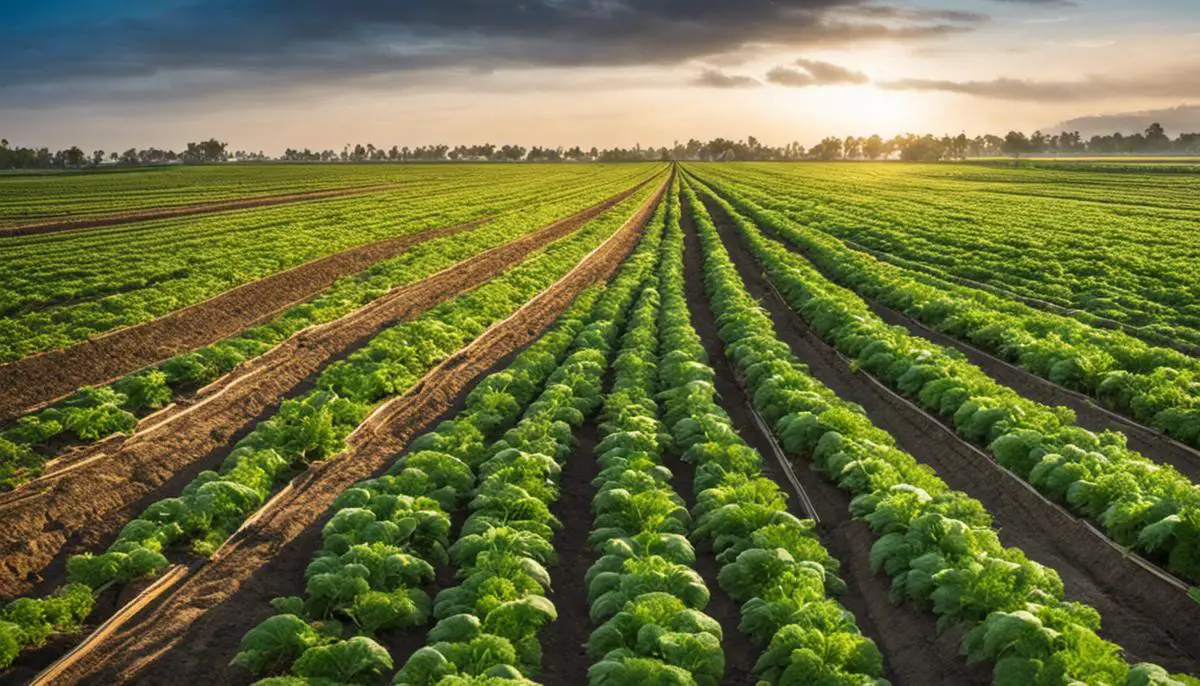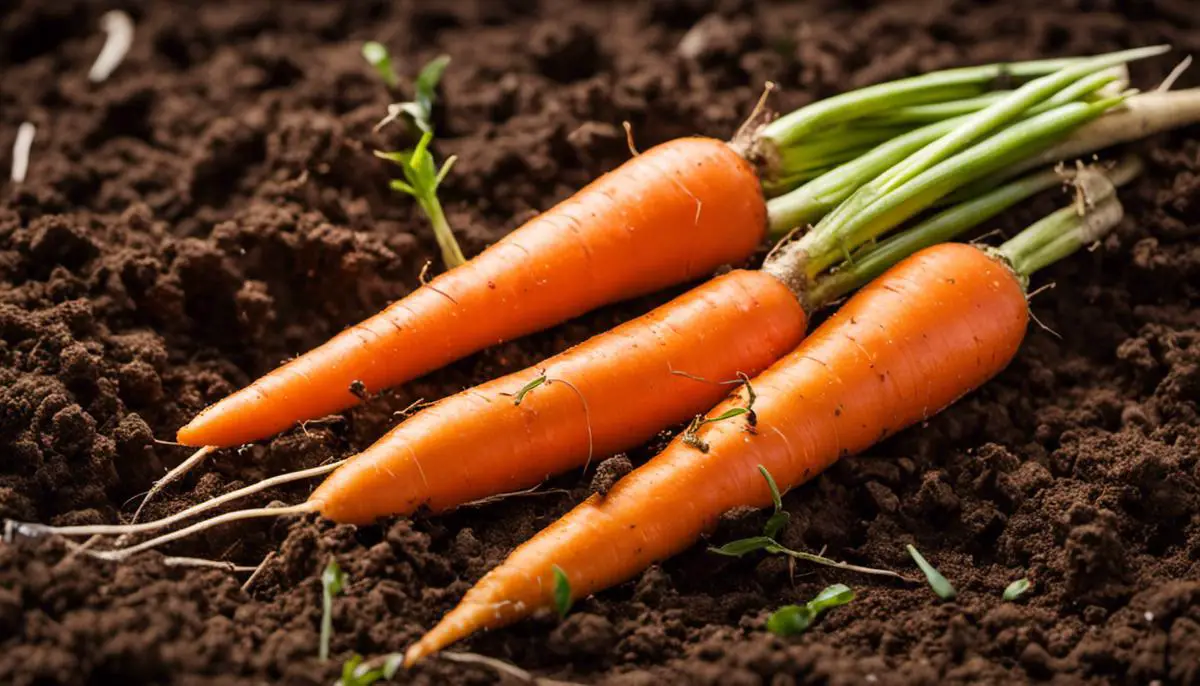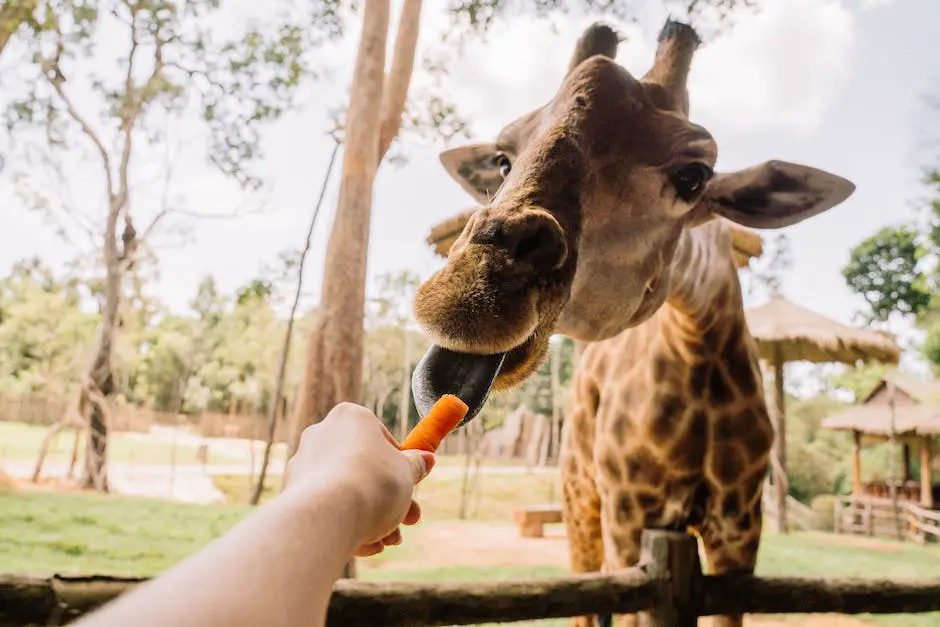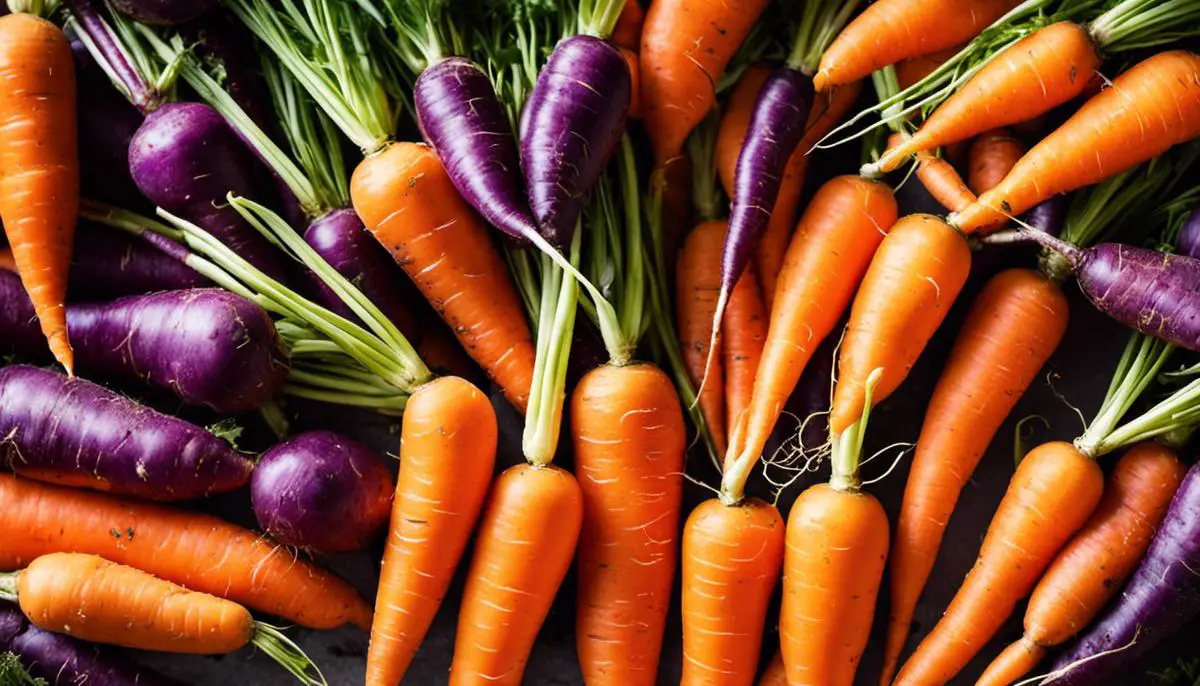Unearthing the joy of growing your own garden carrots is a rewarding venture that goes beyond merely enjoying their crisp, sweet taste. It’s about forging a connection with nature and partaking in a journey that starts with a single seed, gradually metamorphosing into vibrant, healthy roots. The all-inclusive guide that follows immerses you into everything carrot-growing. From grasping the basics of carrot agriculture to understanding the importance of soil preparation and carrot care, to finally, the thrill of harvesting and storing your yield, the guide focuses on making you, the ardent hobbyist, well-versed in this lovely art of cultivation.
Understanding the Basics of Carrot Growing
Unearthing The Mysteries Of Carrot Cultivation: A Beginner’s Handbook
Carrots! One of Nature’s tastiest and healthiest offerings. These delicious roots offer ample reward for the dedicated gardener. But to grow them, one must comprehend the fundamentals of carrot cultivation. Without further ado, let’s take a wealth-testing dive into this wonderful world!
Reader Poll: What online courses would interest you?
First on the list is choosing the right variety. With as many as 20 distinct species including Nantes, Chantenay, and Danvers, selection is purely a matter of personal preference. The favorites among hobbyists are the Imperator and Nantes, renowned for their succulence and sweetness. However, regional conditions and climate should also be factored into the decision.
Next, is soil preparation. This step is paramount as it directly influences carrot growth. An ideal ground is deep, loose, and well-drained with a pH range of 6.0 – 6.8. Hard, heavy soil can lead to stunted or misshapen carrots. It’s especially important to remove stones, as they can obstruct growth, resulting in odd-shaped roots.
Seed planting comes next. For carrot seeds, spacing is crucial. Plant them about 2-3 inches apart to restrict competition and ensure efficient nutrient absorption. Scatter the seeds evenly and cover lightly with soil. Don’t forget – patience is key! Germination takes about 14 – 21 days.
Subscribe to our newsletter!
Carrots have a constant thirst. Regular watering – at least once a week – encourages steady and robust growth. The ground should never dry out, but it should also avoid becoming soggy. The primary aim is to maintain consistent moisture levels.
Fertilizing and thinning are also significant components. A light application of high-potassium fertilizer, prior to planting, can stimulate root growth. Once seedlings reach a height of 2 inches, thin to 1 inch apart. When they attain an additional inch, trim the population again – this time to 3 inches apart. The end game? Healthier, larger carrots!
Pests and diseases, unfortunately, are part and parcel of carrot cultivation. The destructive carrot fly and root-knot nematodes are the most common pests while diseases include leaf blights and soft rot. The recommended solution? Crop rotation and natural pest control measures.
Harvesting is the crowning moment, the culmination of hard work and dedication. Most carrot varieties are ready for harvest 60 – 75 days after planting. An indicator of a mature carrot is vibrant color and firm texture. Harvesting is best done in the morning, when sugar content is at its peak and temperatures are cooler.
Carrot cultivation is as much science as it is art. To nurture them from tiny seeds to the full-fledged, vibrant roots are indeed a fulfilling experience, which is why this hobby is adored by countless around the globe. It’s a fascinating spectacle, watching nature work its wonders in your very own backyard. So, why wait? It’s time to get those hands dirty and make some Carrot Magic!

Preparing Soil and Planting Carrots
The Recipe for Success: Proper Soil Preparations and Carrot Seed Planting for Optimal Growth
Beyond selecting an impeccable variety of carrot to grace your garden, the magic truly starts with diligently preparing your soil and sowing the seeds with the utmost care. No need to feel daunted — every gardener, regardless of experience level, can make their thumb a little greener.
Start by focusing on the soil composition. Carrots prefer a deep, loose, sandy soil, as an overly-hard, stony or clayey soil will stunt growth and can cause forking. They thrive with a pH level between 6.0 and 6.8. To provide a nutrient-rich environment for your carrots to grow in, mixing in mature, well-rotted compost to your soil will work wonders.
Roto-tilling the soil to a depth of about a foot will ensure adequate space for your carrots to put down roots and reach their full potential. Remember, in this context, deep soil means deep carrots!
Sowing the seeds requires the pat of an adept hand while dealing with these minuscule miracles of nature. Form shallow rows, approximately three-quarters of an inch deep and sow seeds sparingly along these rows, aiming for around two seeds per inch. Ensure to cover them lightly with soil and press down for good contact and stable growth.
Consistent watering is key straight after planting in order to avoid soil crusting, which can impede the sprouting seeds. Maintain a soil moisture level of 70 percent to promote optimal growth. Make sure to water the unsprouted seeds daily, and once they sprout, switch to watering only when the soil is dry to the touch.
Fortify your carrot bed with a low-nitrogen fertilizer; too much nitrogen will promote lush foliage but stunted roots. At about four weeks post germination, thin your carrots to about two inches apart. This promotes strong root growth by reducing competition for resources.
Keeping an eye out, vigilantly, for pesky carrot rust fly larvae and other common pests encourages a healthy yield. Employing trap crops and potential predators can organically aid in pest control, and observing crop rotation will reduce disease prevalence in your garden.
After all this hard work, a bountiful carrot harvest awaits you around 70-80 days post-planting, depending on the variety. You’ll know your carrots are ready for harvest when the tops are bright green and the roots are the right color – usually, a vibrant orange.
Gardening might not be an exact science, but following these steps can lead you well on your path to cultivating a profusion of perfect carrots. Nurture your garden, and it will undoubtedly reward your time and effort.

Carrot Care and Maintenance
Unearthing the Wonders of Carrot Care: Tips, Tricks, and Techniques
Carrot cultivation is such a rewarding and heartily satisfying hobby. It’s not just about the final product you reap from your gardening trials, but the journey taken to nurture these beautiful, vibrant veggies. Now it’s time to delve further into the methodology behind growing superbly healthy carrots.
One element that comes into play after selecting the ideal carrot variety, preparing the soil, and sowing the seeds, is the right soil composition. Carrots require a deeply worked, well-draining soil with the ability to retain moisture yet avoid waterlogging. Incorporating well-rotted organic matter or compost can enhance the soil structure, allowing carrots ease in their downwards journey of growth.
Diving in deeper, carrots favor a slightly acidic environment. Aim for a pH level between 6.0 and 6.8. It’s not just for taste, but this pH range is perfect for carrots to absorb the much-needed nutrients from the soil.
Next comes the all-important task of sowing seeds correctly. While dropping seeds onto the soil might seem simple, carrots can be a tad fussy. Sow them about 1/4 to 1/2 inch deep, with around 2 to 3 inches between seeds. This precise technique gives the carrots ample space to sprout.
Often overlooked, maintaining consistent watering is fundamental to sprouting. Carrots love moisture, so water them frequently but lightly, especially when it comes to those delicate seedlings. They require regular watering, but never drench them as it may lead to root rot.
We’ve spoken about preparing the soil and planting the seeds, but let’s not forget nutrition. Fertilizer plays a significant role in carrot growth. Use a low-nitrogen fertilizer which encourages more robust root growth rather than lush leafy tops.
Yet another crucial aspect is thinning carrot seedlings. It might seem cruel, ripping out these tiny growing plants, but it is essential. Thinning them just after they’ve sprouted ensures they have enough space to develop mightily.
Pests – all gardeners’ bane. Luckily, there are several control methods beyond the scope of chemical intervention. From using insect-repelling plants like marigolds to introducing beneficial predatory insects, you can keep your carrot bed safe and sound.
Last but not least, perfect timing is what separates decent carrots from top-notch ones. Harvesting at the right stage ensures you will enjoy the sweetest, juiciest, and most flavorsome carrots. Usually, this is when they’ve reached their desirable size and the tops have started to yellow slightly.
Growing carrots can sometimes feel like a balancing act between science and art. But it’s this entrancing dance that contributes to the heart-warming fulfillment that accompanies unearthing a ripe, home-grown carrot. With these advanced care practices and procedures combined with your hard-learned lessons, your carrot patch is bound to bear the fruits – well, roots – of your labor.

Harvesting and Storing Carrots
In the captivating realm of carrot cultivation, picking the perfect time to free your creations from the ground is vital. The first sign to look out for pits knowledge against patience, since most carrot varieties are ripe for harvest between 50 and 70 days after planting. Knowing the specific days to maturity for the variety planted is critical to achieve the best flavor and nutritional content.
While time is a good gauge, observing the physical appearance of your carrots provides more reliable insight. Protrusion of the root shoulders, or the top part of the carrot, above the soil, gives a surprisingly accurate sign of readiness. The color—a vibrant orange for the standard type—coupled with a size of at least half an inch in diameter at the shoulder, typically indicates a fully matured carrot.
However, not all carrots abide by these general guidelines. For the exciting varieties that come in shades of red, yellow, or purple, other signs to watch out for is the fading or enrichment of hue.
Ah, and let’s not forget: in the world of carrots, feel free to test by taste. A conscious gardener can remove a single carrot to taste for sweetness, checking whether the rest of the family underground is also ready.
Once harvested, proper storage of this versatile veggie is key to preserving its crispy texture and rich taste. First off, remove the green tops. While appealing to the eye, they draw out moisture, speeding up the spoiling process. Only cut the tops and don’t be tempted to wash off the soil before storage. The thin layer of dried soil gives added protection.
For lasting freshness, storing in the fridge is ideal. Carrots can stay in the crisper drawer, placed in a perforated plastic bag to maintain a high-humidity environment. But for slightly longer storage, you might consider classic root cellaring in a cool, dark, humid place.
And if an abundance of carrots has blessed your garden, blanching and then freezing them is the way to go. This method offers convenient access to summer sweetness, even in the depth of winter.
Embrace the delicate balance between the timing of your harvest and the method of storage. Learn from the seasons, adapt, and become a master at keeping your carrots fresh for months to create hearty dishes that will light up the dinner table. There is an undeniable joy in eating a carrot stew in winter made from your own summer harvest.
In closing, remember that gardening is more than a hobby. It’s an ongoing relationship with nature, where care, respect, and understanding go a long way. Cultivating carrots is a humble yet beautiful component of that relationship. Happy gardening!

The satisfaction of watching your carrot plants grow, care for them, and eventually pulling out the mature roots from the soil is second to none. It’s an experience laden with learning, patience, and joy. While you work your way through each stage, remember that every carrot into the soil is a step closer to a healthier, self-sustaining lifestyle. The information shared should serve as a comprehensive guide, assisting you in making informed decisions throughout your carrot growing journey. Happy Harvesting!

